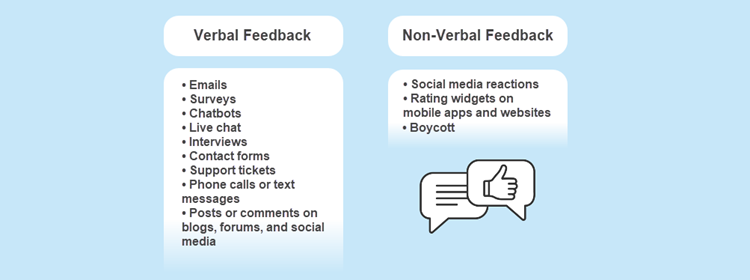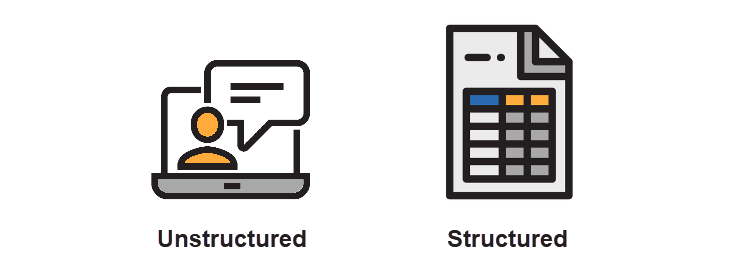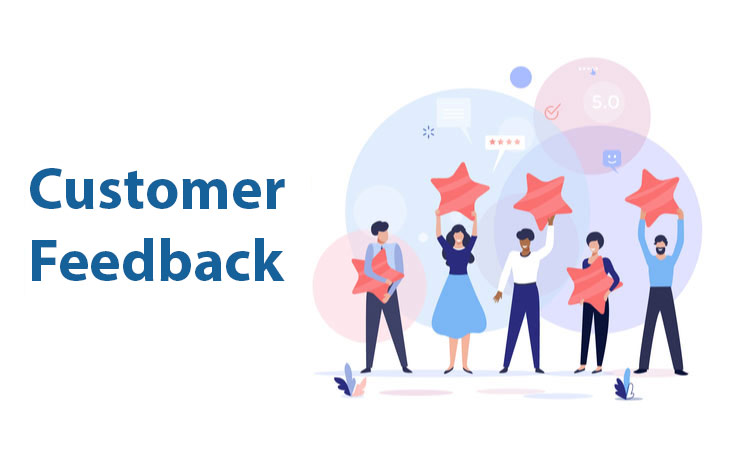The initial success of a business is not permanent. Future success and growth depend on a business's ability to maintain customer satisfaction.
In the omnichannel era, customers use various tools and platforms to express their feelings and opinions about brands. Analyzing customer experiences , understanding where the pain points lie, and alleviating them is the key to increasing customer satisfaction.
This guide defines customer feedback, explains different types of customer feedback, and highlights the importance of leveraging customer feedback in your business.
What is Customer Feedback?

Customer feedback represents a collection of opinions a brand’s customer base has about the brand.
These opinions can be collected and analyzed to determine customer behavior patterns, discover issues with the customer journey, gain other valuable information, and turn this knowledge into actionable insights.
Customer feedback can be expressed verbally and non-verbally.

Types of Customer Feedback
Depending on how it was collected, how the customer feels, and how structured the provided information is, customer feedback can be divided into several subcategories.
Solicited and Unsolicited Customer Feedback

Solicited feedback is information customers give when asked.
Typical methods brands use to ask for feedback are surveys and interviews.
The benefit of solicited feedback is that it is gathered as structured data in a controlled environment. The downside of asking for feedback is that the process is time consuming and costly and the fact that a control group is not a reflection of a brand’s entire customer base.
Unsolicited feedback is information customers give without being prompted.
This type of feedback is typically found on social media threads and blog and forum discussions.
The benefit of unsolicited feedback is that it is unbiased and represents a realistic image of how the customer base feels about the brand. The downside of unsolicited feedback is that it is frequently more difficult for a brand to spot. Leaving unsolicited negative feedback unaddressed can negatively impact a brand’s reputation.
Negative, Neutral, and Positive Customer Feedback

Negative feedback shows that customers were expecting more from the service, product, or experience.
The benefit of negative feedback is that it points to critical issues in a product, service, or company department. The downside to negative feedback is that it can be fake and spread quickly in today's omnichannel culture.
If the negative feedback was given anonymously or without solicitation using a fake online account, there is no way to prove its factuality. As a result, fake negative feedback can harm a brand's reputation and interfere with analysis outcomes, making them unreliable.
Neutral feedback comes from customers who are neither satisfied nor dissatisfied. They are content with the service they received.
The good side of neutral feedback is that it isn’t negative. However, this also means that the customer isn’t fully satisfied and that they will switch to a competitor if offered a better deal or service.
Positive feedback comes from satisfied customers who are almost guaranteed to buy from a brand again.
The benefit of positive feedback is that it points to a brand’s strengths. If customers rate a product or service well, the brand should avoid changing them. The downside to positive feedback is that it often comes from customers who don’t have an opinion but just want to complete the survey quickly, leaving the highest rating on every question.
Structured and Unstructured Customer Feedback

Structured feedback is uniformly formatted, allowing for easy storage and analysis.
This type of feedback is typically solicited. Examples include rating scales and surveys featuring multiple-choice questions.
Unstructured feedback is free of form, meaning it requires natural language processing and flexible analytics engines for understanding, structuring, analysis, and storing.
Free-form feedback is typically unsolicited. Examples include reviews, sales objections, and social media posts.
Why is Customer Feedback Important?

Successful customer feedback analysis and implementation are beneficial to businesses in many ways. The impact of leveraging customer feedback is best observed in:
- Decision making. Customer feedback is used in combination with sales KPIs for the analysis of customer behavior and expectations. As a result, businesses can create more accurate buyer personas, predict sales trends, and improve products and customer journey touchpoints.
- Brand engagement. Soliciting feedback, addressing unsolicited feedback, and implementing feedback analysis results makes customers feel valued and understood. This results in the creation of repeat customers and an increase in loyalty.
- Departmental and overall performance. Customers provide feedback to inform businesses about their expectations and highlight the touchpoints that didn’t meet them. Using this information for departmental and company-wide improvements addresses what customers consider burning issues, leading to improved company performance and customer satisfaction.
Conclusion
Customer feedback is a valuable asset and treating it as such ensures business growth.
Now that you’re acquainted with different types of customer feedback and the benefits of customer feedback analysis, leverage that knowledge to increase sales.
